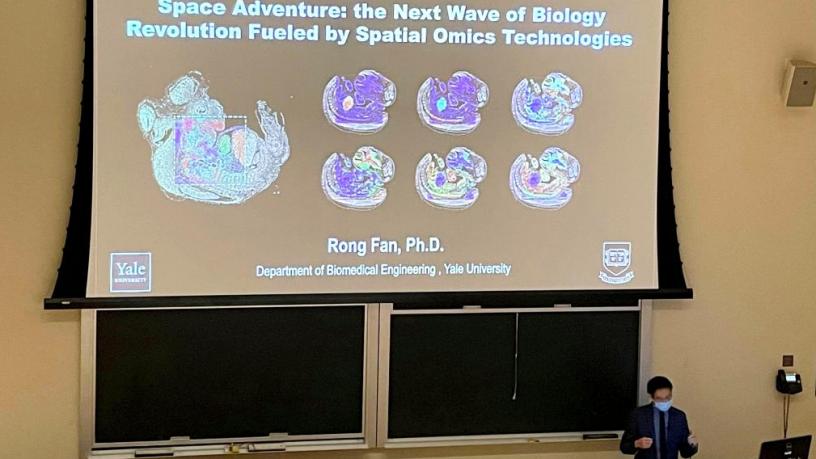Event Recap: BME Seminar - Rong Fan, Yale University
BME SEMINAR SERIES

Does a single cell carry information that could transform our understanding of human disease? Dr. Rong Fan, the most recent speaker in our BME Seminar Series on Friday, October 1, might hold the key to unlocking these secrets with his research developing single-cell omics technologies.
Now a professor of Biomedical Engineering and Pathology at Yale University, Fan wasn’t always focused on engineering or biology-- in fact, he didn’t even study cells until well into his career as a scientist. He earned his PhD in Chemistry from the University of California at Berkeley, then did his postdoctoral training at Caltech. But nearly fifteen years ago, when the failure of the Merck HIV vaccine clinical trial made the news, Fan turned his attention to protein arrays. At the time, the gold standard for vaccine testing was a single parameter assay; we now know that multiple proteins must be examined, so the lack of thoroughness of testing may have contributed to the vaccine’s failure. Fan thought that the arrays used for testing cells could be made much smaller and more specific; could he measure all cytokines from individual cells to decipher their secret conversation and understand what they might do? This question would turn out to jumpstart his research for his career.
In his talk, titled “Space Adventure: The Next Wave of Biology Revolution Fueled by Spatial Omics Technologies”, Fan introduced the emerging field of spatial omics and presented his laboratory’s new technology platform called DBiT-seq: a microfluidic Deterministic Barcoding in Tissue for spatial multi-omics sequencing. This platform utilizes a high-density microarray and microfluidics to interrogate small numbers of cells. With this technology, Fan’s group demonstrated, for the first time, co-mapping of the whole transcriptome and a large panel of proteins with high spatial resolution. It is fully compatible with clinical tissue specimens, making their work highly translatable. A breakthrough came when they were able to integrate spatial mapping with high throughput sequencing using single-cell RNA-seq data, which allowed for accurate cell type annotation in relation to spatial location in tissue. Fan believes that next-generation sequencing-based spatial omics is poised to fuel the next wave of biological revolution, with exciting applications for biomarker discovery, therapeutics, and beyond. Fan has even begun to apply this work to studying effects of the COVID-19 vaccine, bringing his work full circle from the original failed HIV vaccine that sparked his interest in this work. He emphasized that DBiT-seq is not just a spatial transcriptomics technology, but a platform to develop many more spatial omics technology and unlock unprecedented possibilities to empower future biomedical research. In his words, “the only limit is your imagination!”
You can read more about the Fan lab’s spatial omics research here. His exciting lecture was the third of many in this semester’s seminar series hosted by the Department of Biomedical Engineering at Columbia University. If you are interested in attending virtually, the weekly series takes place on Friday mornings at 11:00 AM Eastern and includes a variety of renowned academics from top universities to talk about their specific research and experience.
Learn more and register for the seminar series!
